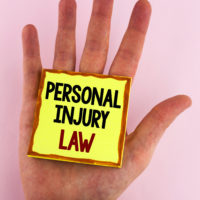Evidence In Port St. Lucie Car Crash Cases

Victim/plaintiffs have the burden of proof in civil cases. They must establish either negligence or negligence per se by a preponderance of the evidence (more likely than not).
Simple negligence is basically a lack of ordinary care that causes injury. Essentially, the victim/plaintiff must prove that the driver made a lapse in judgement that was so egregious it was below the standard of care. For example, many people consume small amounts of wine during religious ceremonies. If these individuals drive home, they are technically driving under the influence of alcohol. But most people would not consider that act a breach of ordinary care.
Negligence per se involves the violation of a safety statute. Tortfeasors (negligent drivers) who break safety laws are either presumed negligent or liable for damages as a matter of law. In either instance, the victim/plaintiff must have evidence to prove liability.
Traditional Evidence
Beginning with the first car crash in 1891 (or 1869, depending on who you believe), victim/plaintiffs have mostly relied on the police accident report and eyewitness testimony to prove liability. These tools are still extremely valuable in today’s Port St. Lucie negligence cases. But they are not perfect.
Eyewitnesses often provide crucial testimony. It’s very compelling to see someone simply tell what s/he saw. But not all eyewitnesses are willing to share their stories in court. Moreover, eyewitnesses can be mistaken or biased. Experienced insurance company lawyers always bring out these flaws in order to discredit the witness.
Similarly, the police accident report is not always 100 percent reliable. If the victim was unable to give a statement, the initial report only contains one side of the story. Sometimes, officers conduct supplemental investigations. But these activities are rare. Most police departments consider car crashes to be civil matters that the parties will work out between themselves.
Given the inherent weaknesses in these forms of evidence, many car crash lawyers look for supplements. Fortunately, technology has made these things available.
Technology-Based Evidence
All new passenger vehicles have Event Data Recorders. Much like the “black box” in a commercial jet, the EDR captures and stores information like:
- Vehicle speed,
- Brake application,
- Steering angle, and
- Engine RPM.
Unlike eyewitnesses, EDR readouts are almost impossible to challenge in court. Assuming the gadget was in good working order, the information an EDR provides is never wrong.
In many large vehicle crash cases, the Electronic Logging Device is critical. ELDs are connected to the power train, so they provide foolproof evidence concerning HOS (hours of service) compliance. This information is especially important in fatigued driving cases.
An attorney must work quickly to preserve the ELD, EDR, and other electronic evidence. Typically, the insurance company destroys totaled vehicles almost immediately after the crash. To preserve physical evidence, attorneys usually send spoliation letters to insurance companies. These letters create a legal duty to preserve any potential evidence, including the ELD and EDR, until the victim/plaintiff’s attorney has a chance to examine it.
Due to privacy laws, these examinations usually require court orders.
Work with Experienced Lawyers
Attorneys need substantial amounts of evidence in car crash cases. For a free consultation with an experienced personal injury attorney in Port St. Lucie, contact Eighmie Law Firm, P.A. We routinely handle matters all along the Treasure Coast.
Resource:
nhtsa.gov/research-data/event-data-recorder


